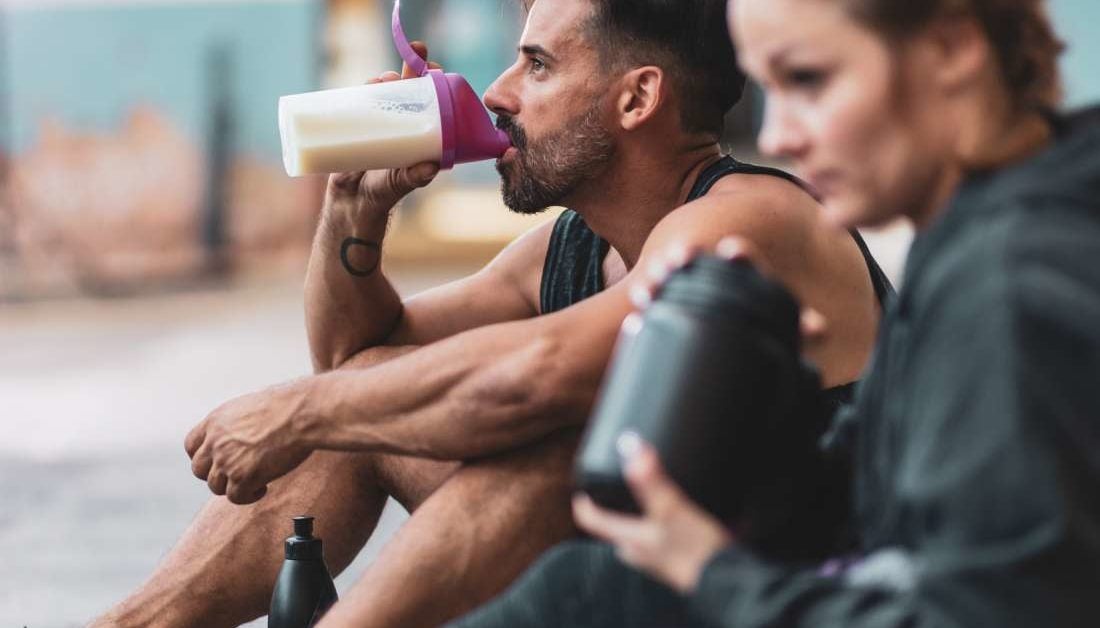Workout is an integral part of a healthy lifestyle. The satisfaction after working out is real. But so is the muscle soreness that follows. Yes, it is validating to know that you worked out so well that now your muscles ache. But for how long? The soreness can be difficult to bear. Understanding how to effectively deal with muscle soreness is crucial for optimizing recovery and preventing injury. In this article, we will explore various strategies and techniques to help you manage and alleviate post-workout muscle soreness. So let’s begin!
Gradual Progression:
One of the key ways to minimize muscle soreness is to gradually progress your exercise routine. Avoid abruptly increasing the intensity, duration, or frequency of your workouts, as this can lead to excessive muscle damage. Gradual progression allows your muscles to adapt and recover more effectively, reducing the severity of soreness. Think about it yourself: If you take one step at a time, although it might take more time, you won’t be restless or uneasy and will reach your destination anyway. However, if you take 3–4 steps at a time, sure, you might reach your goal sooner, but you’d end up feeling more exhausted than you would if you were to take one step at a time.

Stay Hydrated:
“A brief body of research shows a correlation between dehydration and increased muscle soreness and DOMS,” explains Seedman. While more research needs to be done, “researchers and practitioners have postulated that if dehydration increases soreness, then increased levels of hydration can minimize it,” says Seedman in addition to the previous statement. Basically, when muscles break down, they release waste products and toxins. Now they obviously need to be taken out of the body, and water comes to the rescue since it helps flush out all these waste products. Henceforth, make sure that you’re always hydrated.

Protein Intake
If you’re a workout freak and want to prevent recurring or long-lasting soreness from your workouts, taking in a bit more protein, say double the amount, is a good way to deal with these cramps. Now, this clearly doesn’t mean that you have to take excessively high amounts of protein. While needs vary for everybody, people who work out should aim for about 1.4 to 2 grams of protein per kilogram of body weight, per the International Society of Sports Nutrition.

Use Heat or Ice
The debate between heat therapy and cold therapy is ongoing, juggling between what is better and what is not, but when it comes down to it, it’s really just about what feels good to you. The effects, for the most part, are temporary. But when you’re super sore, any fleeting relief (as long as it’s safe) is truly worth it. For some, heat does the job, and for others, ice is the answer. So whatever fits right for you, certainly go for it. Ice helps reduce swelling, which sometimes comes along as a reason for muscle soreness. And heat can also minimize tension and pain signals.
:max_bytes(150000):strip_icc()/3119251-AdobeStock_261553048-f40aace46a6b41bc81373e644a175247.jpg)
Get a Good Massage
A good massage soothes the mind just as much as it calms the body. While that is not the point of getting a body massage during muscle soreness, it is just an addition to the benefits of a good massage. Massaging tender points can help ease the symptoms of DOMS. But, obviously, visiting a masseuse every time you go hard at the gym isn’t totally realistic. That’s where self-massage, whether it be with a recovery tool like a foam roller or a massage gun or even just with your hands, can be helpful. But make sure that you’re careful enough while doing so because sometimes people can go overboard and cause more damage than there is already.

Over-the-Counter Pain Relief:
If your muscle soreness is particularly intense, over-the-counter pain relievers such as ibuprofen can help reduce inflammation and alleviate discomfort. However, it’s important to consult a healthcare professional before relying on medication for long-term relief. NSAIDs are designed for short-term use and shouldn’t be taken for more than 10 consecutive days for pain, according to the Cleveland Clinic.
Post-workout muscle soreness is a normal part of the exercise process, but there are several strategies you can employ to manage it and minimize its impact on your daily life. Muscle aches are bound to happen when you exercise. But when the slightly annoying ache becomes borderline painful or even incapacitating, that’s your body’s way of telling you it’s time to slow down a bit. So, always keep in mind that listening to your body and providing it with the care it needs is essential for long-term success.


